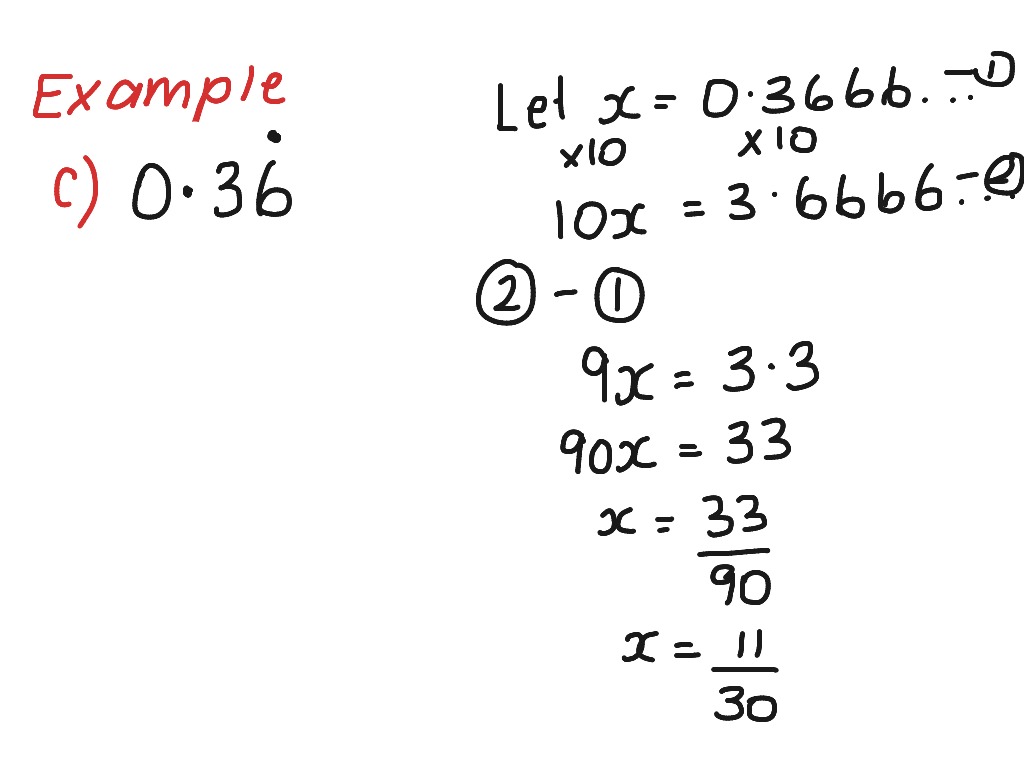

I will note that this kind of fraction precision is not optimized and will usually not be needed, but for completeness it is here. (8857097, 10000000) # mathematically correct Given below are Various examples of converting decimal to fractional value. Original Response def float_to_ratio(flt): > Fraction(str(f))Ĭasting as to a string also allows for accurate Decimal instances > Decimal(f).as_integer_ratio() I found a much simpler way to resolve the accuracy issue. The mathematical result desired was 8857097/10000000 which can be achieved by casting to a string and then manipulating it. It is all about the conversion of repeating decimal to the fraction form. To expand upon Martijn Pieters excellent answer with an additional option due to the imprecision inherent with more complex floats. Solution: In the given decimal number, the number 00 is a non-repeated decimal value, and 69 is in the repeating form. 6th Grade Math Worksheets Decimals Fractions we have 9 Pics about 6th Grade Math Worksheets Decimals Fractions like Simplest Form Examples The Truth About Simplest Form Examples Is About, 30 Writing Fractions In Simplest Form Worksheet - support worksheet and also Sneak Peek of my Fractions Workbook - NOW AVAILABLE Teaching High. This is the same as moving the decimal point two places to the left. take the integer ratio tuple and pass that in as two separate arguments.Īnd a small demo with your sample values: > for f in (0.25, 0.5, 1.25, 3.0):īoth the fractions module and the float.as_integer_ratio() method are new in Python 2.6. Convert from percent to decimal: To change a percent to a decimal we divide by 100. Which essentially does the same thing, e.g. percision // Automatically finds Fraction in simplified form for (int y 2 y < DenominatorPercision + 1. Or you can just use the om_float() class method: om_float(0.25) Algorithm To Convert A Decimal To A Fraction. If you are using Python 2.6 still, then Fraction() doesn't yet support passing in a float directly, but you can combine the two techniques above into: Fraction(*0.25.as_integer_ratio()) Every recurring decimal has a representation as a fraction. So, we write 1000 as the denominator of the fraction to get. Step 2: The place value of the last digit 4 is a thousandth. Step 1: We drop the decimal and write the number 564 as the numerator of a fraction. Click hereto get an answer to your question Convert the following decimal numbers to fractions (in simplest form):(i) 0.8 (ii) 0.225 (iii) 0.0092. The latter has a very helpful str() conversion: > str(Fraction(0.25))īecause floating point values can be imprecise, you can end up with 'weird' fractions limit the denominator to 'simplify' the fraction somewhat, with Fraction.limit_denominator(): > Fraction(0.185)įraction(3332663724254167, 18014398509481984) Example 2: Convert decimal 0.564 to a proper fraction in simplest form.

Use the fractions.Fraction() type: > from fractions import Fraction (as of Python 3.6, you can do the same with a decimal.Decimal() object.)


BYJUS online simplest form calculator tool.
Decimal to fraction converter simplest form free#
Step Two: Multiply both the numerator and the denominator. The Simplest Form Calculator is a free online tool that displays the simplified form of the given fraction. Step One: Rewrite the decimal number over one (as a fraction where the decimal number is numerator and the denominator is one). In this case, you will use the decimal 0.25 as an example (see the graphic below). The total number of pieces that a pizza has will be the denominator and the number of pieces that you ate will be the numerator.Use float.as_integer_ratio(): > (0.25).as_integer_ratio() You can convert a decimal to a fraction by following these three easy steps. Usually, the denominator is a larger number as it represents the total parts of a whole and the numerator is smaller than the denominator as it represents the number of parts we consider. Next, you want to multiply both the top and bottom of your new fraction by 10 for every digit to the left of the decimal point. It has two parts named numerator which is the upper number and the denominator which is the bottom number. However, in most cases, the solutions to these equations will not appear in simplified form (the provided calculator computes the simplification automatically). Fractions are expressed as a division of two numbers. Decimal and Fraction are both the representation for rational numbers yet the two are very different from each other.


 0 kommentar(er)
0 kommentar(er)
